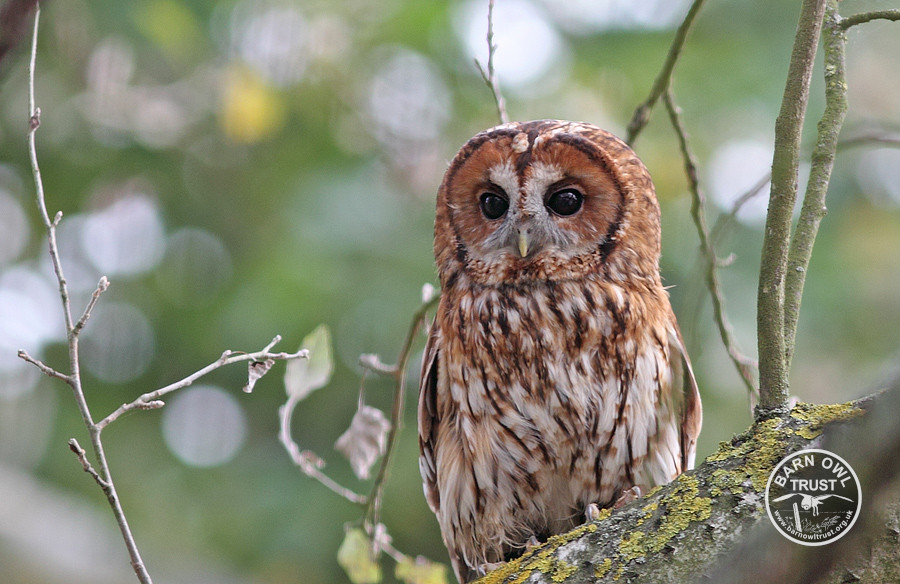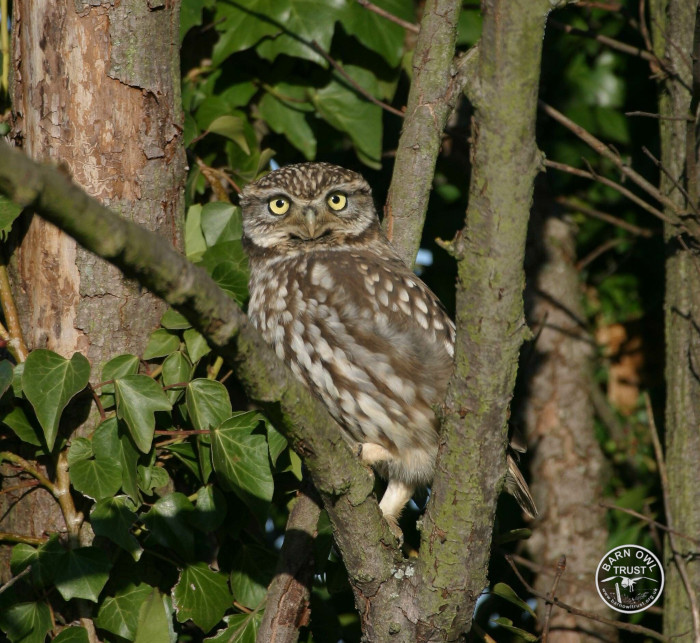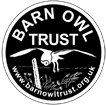Owl Identification
The appearance, sounds, flight, and habitat of the 5 most common species or types of owl in the UK:
Barn Owl, Tawny Owl, Little Owl, Long-eared Owl and Short-eared Owl.
Barn Owl identification
- About 330mm tall with a wing span of 900mm.
- Largely white underparts.
- Golden buff upper-parts with grey markings.
- White, heart-shaped face with dark eyes.
- Overall impression in flight of a large white bird.
- Slow, buoyant flight, often back and forth across an open field, searching for prey.
- Lives mainly in open farmland habitat (not woodland).
- Seen more than often heard, they rarely call.
- Barn Owls don’t hoot! They shriek, hiss and snore.
- Often seen at night whilst driving but dawn and dusk sightings are most common.
- Use our sexing Barn Owls photoguide to help identify male and female. Females tend to be darker.
- Owlet identification and ageing.
- Barn Owl pellets are different from other owl pellets.
- Normal and starvation weights.
- Barn Owl facts

Adult Barn Owl screech
Tawny Owl identification
- About 430mm tall with a wing span of 950mm.
- Brown or grey underparts and upperparts.
- More rounded brown or grey face with dark eyes.
- Overall impression in flight of a large brown bird (but can look pale in car headlights).
- More direct flight, often from tree to tree.
- The most common owl in the UK.
- Primarily live in woodland habitat but anywhere with mature trees (including cities).
- Familiar and common ‘twit twoo’ call. Usually Tawny Owl females ‘kewick’ and males ‘hoohoo’ – but they can be variable.
- Largely nocturnal and rarely seen at other times, unless at roost.
- Owlet identification and ageing.
- Tawny Owl pellets are different from other owl pellets.
- Normal and starvation weights.
- Tawny Owl facts

Tawny Owl calls
Little Owl identification
- About 220mm tall with a wing span of 560mm.
- Mottled brown and white underparts and upperparts.
- Narrow brownish face with pale yellow eyes and dark irises.
- Overall impression in flight of a smallish brown bird.
- Characteristic, direct, undulating flight.
- Lives in mixed farmland habitat, particularly where there are fruit trees/orchards.
- Repetitive call is a plaintive ‘kiew kiew’ and a ‘wherrow wherrow’ (reminiscent of a small dog barking).
- Largely diurnal, but call may be heard at any time of the day or night.
- Owlet identification and ageing.
- Little Owl pellets are different from other owl pellets (but similar to Kestrel pellets).
- Normal and starvation weights.
- Little Owl facts

Little Owl calls
Long-eared Owl identification
- About 350mm tall with a wing span of 950mm.
- Mottled pale and dark brown underparts and upper-parts.
- Rounded brown face, orange eyes with dark iris and long ear-tufts (when raised).
- Overall impression in flight of a large brown bird (though surprisingly small when perched).
- Buoyant flight in a back and forth motion but rarely seen.
- Lives in woodland and farmland habitat.
- Has a rarely-heard repeated ‘hoo, hoo, hoo‘ call uttered only in the breeding season.
- Extremely nocturnal but communal roosts can occasionally be found in thick cover in the winter.
- Normal and starvation weights.

Short-eared Owl identification
- About 350mm tall with a wing span of 1000mm.
- Mottled pale brown underparts with upper breast streaked dark brown.
- Mottled pale and dark brown upperparts.
- Rounded brown face, yellow eyes and short, often indiscernible ear tufts.
- Overall impression in flight of a large brown bird (but underparts can look almost white).
- Buoyant flight in a back and forth motion.
- Lives in farmland, moorland and wetland habitats, including marshes and reedbeds.
- A male’s rarely heard song is a low ‘boo-boo-boo-boo-boo‘, whilst females give a ‘ree-yow’ call.
- Both nocturnal and diurnal, they can be seen hunting in daylight in suitable habitat.
- Normal and starvation weights

Other relevant pages
There is a useful identification guide on the barnowlsurvey.org.uk website
Owlet identification and ageing
When you find an owlet, it’s important to be able to identify and age it accurately, because what species it is and how old it is will dictate the correct course of action.
